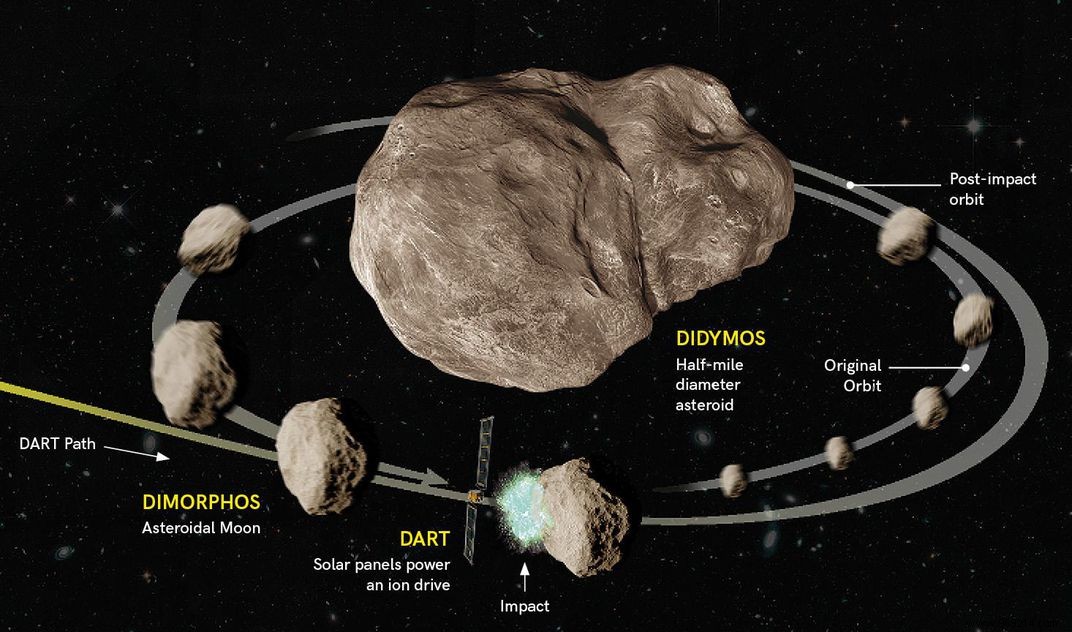NASA has launched many spacecraft since its inception, but never before like this. At the end of November, the DART mission will attempt a unique feat:colliding with an asteroid to modify its orbit.
While NASA has located over 90% of all asteroids larger than a kilometer in diameter, astronomers are still scrambling to locate objects larger than 140 meters . And for good reason, our planet is not immune to unpleasant surprises. So, alongside these follow-up operations, we need to consider ways to defend ourselves.
From this ambition was born the DART mission (for Double Asteroid Redirection Test ), considered NASA's first foray into active planetary defense.
The objective of this mission will be to hit an asteroid to deflect its trajectory. NASA will focus on a pair of binary asteroids composed of a main rock 780 meters in diameter , called Didymos, around which evolves a small asteroid 160 meters in diameter named Didymoon.
Once there, the ship, which is nothing more than an impactor, will come crashing down on this small moon. DART will not see its target clearly until about four minutes before impact and must crash within fifteen meters of its aiming point.
The shock will need to be enough to accelerate the nearly twelve-hour orbit of the moon by at least 73 seconds and possibly more than ten minutes. Scientists will observe this change in trajectory of the struck body around the other by measuring its degree of reflectance. Concretely, if the object touched darkens a little earlier or a little later than it should according to the ephemeris, then NASA will have succeeded in its mission.

DART will also carry a CubSat developed by the Italian space agency. The latter will separate from the ship before impact to capture images of its disappearance. In 2024, the European Space Agency (ESA) will launch a probe to map the DART impact crater.
The mission, which will ultimately cost around $330 million , will launch aboard a SpaceX Falcon 9 rocket, normally at the end of the month. The launch window will indeed open from Tuesday, November 23 at 10:20 p.m. (local time). In the event of a problem, whether technical or meteorological, NASA will still be able to launch its mission until February 2022. Whatever happens, and after more than seven million kilometers traveled, DART will arrive on site at autumn 2022 .